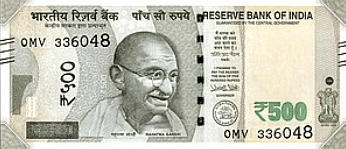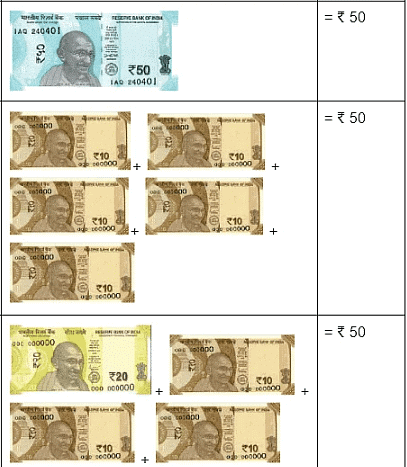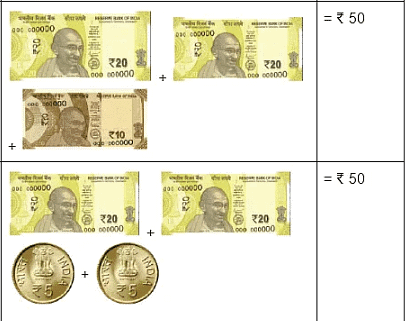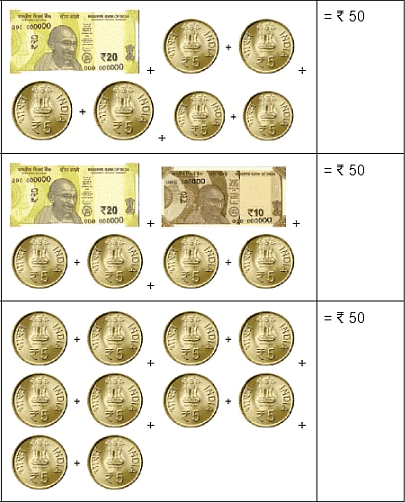Money | Mathematics Olympiad for Class 1 PDF Download
Introduction
- Money is defined as medium of exchange. Money is required to purchase items that we need in our day to day lives like clothes, food, etc. It is a means to buy all things.
- Let us understand with the help of an example.
- Suppose you want to buy a new pencil box. How will you buy it ?
- You will ask your parents to pay money to the shopkeeper to buy a pencil box.
- Money is either in the form of metal coins or papers.

Five Hundred and two thousand rupee notes


The currency used in India is Rupee which is denoted by the symbol ‘₹’. Money is consisted of rupees and paise.

Paper Notes and Coins
Money can be identified by its different design. Every country in the world have self designed paper notes and coins. Paper notes and coins can be identified by the value written on them in words and in numbers. There are coins of 5 paise, 10 paise, 20 paise, 25 paise, 50 paise, 1 rupee, 2 rupees, 5 rupees and 10 rupees and paper notes of 1 rupee, 2 rupees, 5 rupees, 10 rupees, 20 rupees, 50 rupees, 100 rupees, 200 rupees, 500 rupees and 2000 rupees.
1 rupee = 100 paise
i.e., ₹ 1 = 100 p

Counting Money
Money can be counted by simple addition of different values.
Let us understand this with the help of an example.
Suppose you went to a toy shop and bought a toy worth ₹ 50. Now how will you pay to the shopkeeper ? How many coins and notes will you need ?
We can pay ₹ 50 in many ways.



|
29 videos|114 docs|69 tests
|
FAQs on Money - Mathematics Olympiad for Class 1
| 1. What is a money class? |  |
| 2. What are the benefits of taking a money class? |  |
| 3. How can a money class help in improving financial literacy? |  |
| 4. Are money classes suitable for all age groups? |  |
| 5. Can I find online money classes? |  |





















